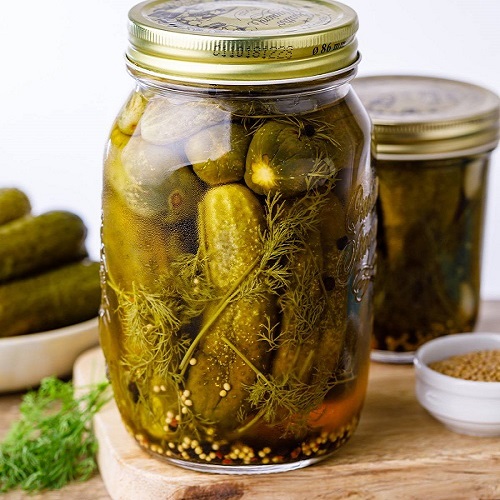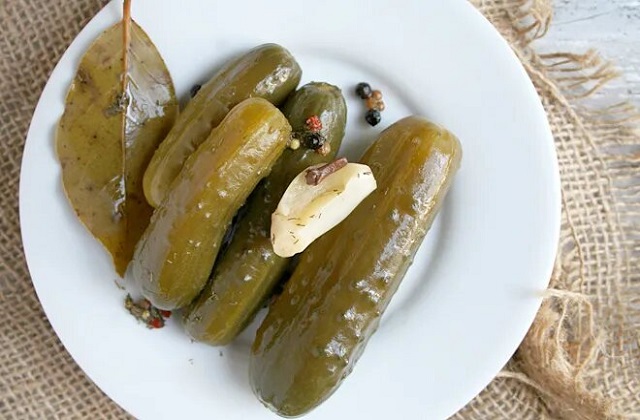When it comes to achieving that classic sour flavor, pickling and fermenting are very different. When making pickled veggies, vinegar is frequently included in the acidic brine that they’re submerged in (acetic acid).
However, the salt water brine used to preserve fermented foods may also contain spices and sugar. For that classic “pickle” flavor, anaerobic bacteria are developed and then naturally converted to acetic acid through this method.
Cucumbers can be preserved using either method because acetic acid is utilized in both. …and both of them taste like dill pickles.
EQUIPMENTS
Container for fermenting
Before you can start fermenting vegetables, you’ll need a big enough container. You’ll need a gallon container for every five pounds of vegetables, as a general rule of thumb.
Crock Dill Pickles can be made in a variety of containers, even if you don’t have a crock of your own. In place of a crock, food-grade glass or plastic containers are frequently utilized.
Mason jars of the gallon size are the most commonly used crock alternative. However, using a stoneware crock is the favored way of fermenting.
Weight
To keep the cucumbers submerged in the brine, you’ll also need a weighted object, like a crock or you can use a dinner plate with a diameter just a hair smaller than your crock.
A Cover
The container must be protected, so you’ll need a technique to do that as well. If you’re going to leave it on your counter for days or weeks, you’ll want to make sure it’s free of dust and bugs.
You should not, however, use an airtight lid because the fermentation gases must escape. If your crock pot doesn’t have a lid, you may use a clean tea towel instead.
Once you’ve figured out what you need to ferment cucumbers, it’s time to get down to business.
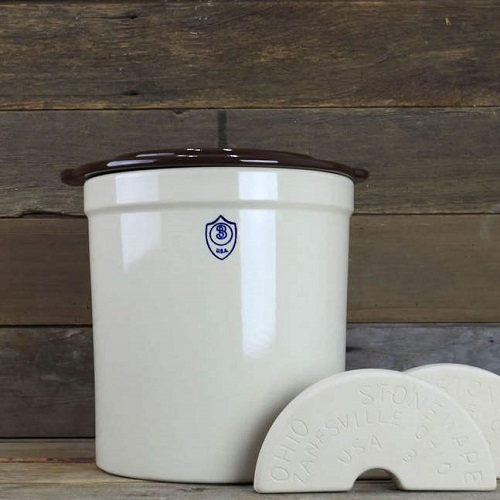
INGREDIENTS
- 24 pickling cucumbers
- 12 gallons of distilled or purified water (not tap water)
- 2 1/2-3 tbps sea salt
- 12 garlic cloves, peeled
- 1 cup fresh or dried dill, minced
- 2 tsp black peppercorns
- 1 tsp black tea leaves or fresh grape leaves
It is possible to alter the amount of salt in the brine depending on personal preference. In average, for every quart of water that you use, add 1-3 tablespoons of salt to it.
However, according to the guidelines for fermenting, you should aim for a salt ratio of less than 5% when fermenting cucumbers, and ideally between 2% and 3%.
Take the volume of liquid in milliliters and divide it by the percentage of salt you want to use to get the amount of salt you need.
- If you want a 2% ratio, for example, multiply the liquid volume in milliliters by.02. In grams, that’s how much salt you’ll need.
- For those who prefer the teaspoon measurement, 1 teaspoon is 5.92 grams of fine sea salt. Those instructions allow you to adjust the salt accordingly.
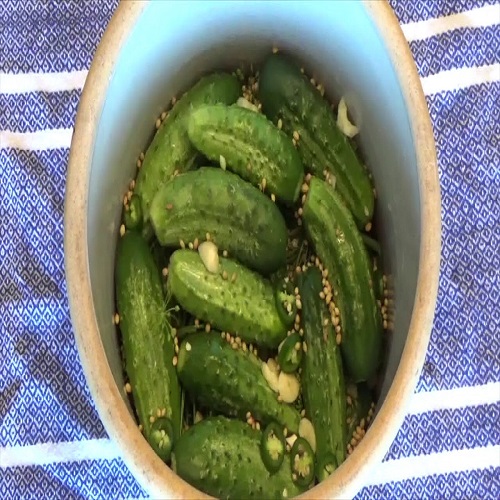
How to prepare?
Submerge the pickled cucumbers in cold water for 10 to 30 minutes before to preparing crock dill pickles. So they’ll stay nice and crisp.
Make the brine while the cucumbers are in the cold water. Stir the water and sea salt together until the salt is completely dissolved.
Cut off the ends of the cucumbers once they’ve been in the cold water. This is another method for ensuring that your cucumbers retain their crispness after they ferment.
Place the other half of the cucumbers in the crockpot. Afterwards, sprinkle half of the dill, peppercorns, and black tea leaves over the cucumbers before serving.
Add the rest of the cucumbers to the crock pot. Onion powder and tea leaves can be added at this point.
Continue to add cucumbers to the crock. As a general rule, your container should have at least four inches of headspace at the very top.
This is required in order for you to safely increase your weight. In addition, you must ensure that your cucumbers have at least 1-2 inches of brine on the surface to ensure optimum fermentation.
Pour the brine over the cucumbers in the crock until they are completely immersed and afloat.
Put a plate with a heavy object on top of the stone crock weights or a plate. Keeping the cucumbers completely submerged in the liquid is the most crucial thing to remember.
Wrap a tea towel in a clean dishcloth and secure the lid to the crock. Place the crock in an area that doesn’t get above 80°F inside of an enclosed area.
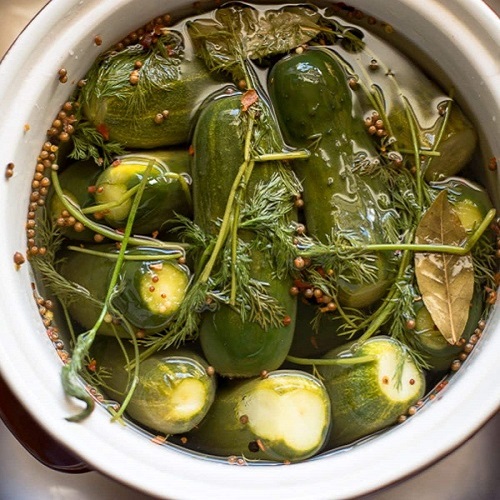
Days of fermentation
Shake the crock every day while the cucumbers ferment for 3-7 days at room temperature. You want to look for bubbles on the top of your cucumbers while inspecting them.
Your crock-dill pickles are alive and thriving because of this. In addition, don’t be surprised if the brine becomes hazy.
It’s very usual for this to happen. The crock dill pickles can be tasted at any time after bubbles begin to form. The more time they spend in the crock, the sourer they will become.
Pickles can grow soft if left on the counter for an extended period of time in the brine. Cucumbers matured for five days to make a crisp but sour pickle in my kitchen.
Put the pickles in a gallon-sized glass jar or plastic container and let them ferment for a few weeks. The brine should then be poured over the pickles to cover the top.
Keep in the fridge. This will effectively end the fermentation process.
Pickles that have finished fermenting can be kept in the fridge for up to six months. Surface scum in the container, on the other hand, may necessitate regular cleaning.
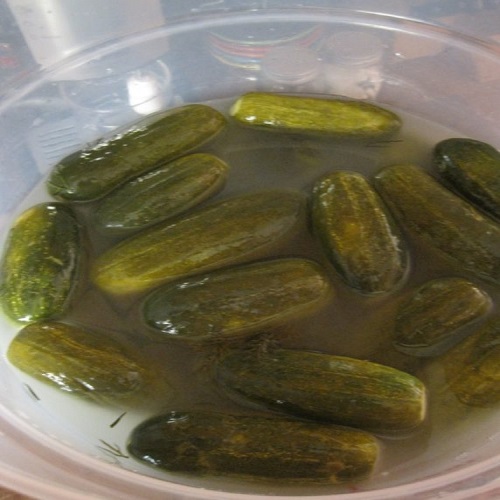
Canning Fermented Cucumbers
Canning your crock dill pickles is another way to keep them fresh for a long time. Make the fermented cucumbers according to your preference by following the same steps.
Remove the pickles from the brine and store them in quart-sized mason jars that have been cleaned and sterilized. After that, transfer the brine to a big stockpot and keep warm.
The brine should boil for 5 minutes before it is ready to use. The brine should be poured over the pickles, leaving 1/2 inch of headspace at the top of each jar.
To prepare, soak for 15 minutes in a hot water bath and make any required adjustments for elevation.
Enjoy!
